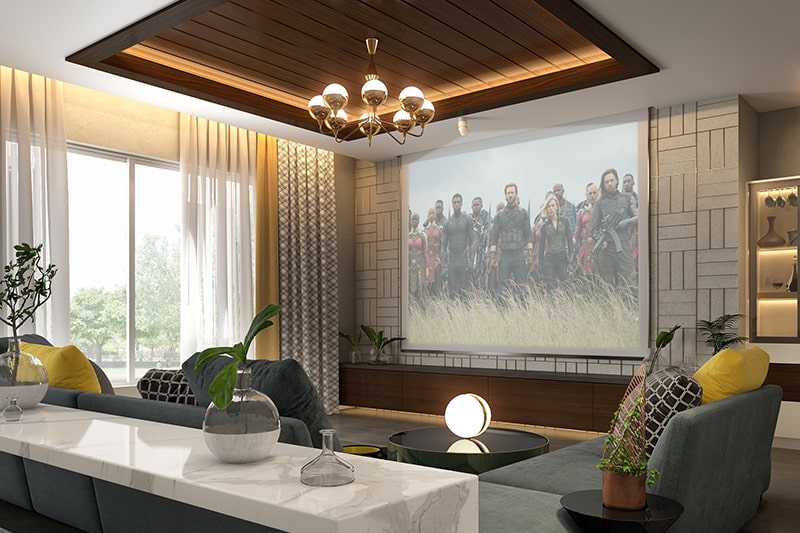A Guide To Different Types Of False Ceiling Materials
False ceilings can dramatically change the way your home looks. This explains why they have become a hot trend with modern homeowners today. False ceilings give your home a touch of royalty, pulling all the attention towards itself thanks to the elegance and beauty they bring to home interiors. And beyond aesthetics false ceilings are great to hide unwanted sights such as wires or plug points, they absorb sound (which is great if you need a quiet space), and heat thanks to layers of ceiling boards. It’s really a smart addition to send your home’s style quotient straight through the roof, isn’t it? Come let us tell you more about this interior design innovation.
What Exactly Is A False Ceiling?
False ceilings are artificial ceilings designed as a lowered extension of an existing ceiling. It is the second layer of a roof suspended with metal or wooden frames. Also known as a dropped or suspended ceiling, they were initially only meant for commercial spaces. But with the advent of several designs that have sprung up in the market every homeowner now longs to have one. And they have multiple advantages apart from improving the aesthetics of a room. False ceilings make a room cool in summer, warm in winter and hide ugly wires and fixtures. Another great thing about them is that they do not require much maintenance. All your false ceiling needs is deep dusting from time to time. So with the right use of colour, texture and lighting a false ceiling can do wonders for your home. And the best part is that a false ceiling can easily be incorporated in any room in your home.
Types of False Ceiling Materials
False ceilings are categorized in different types based on the material, use and appearance. The primary classification based on the type of materials used for false ceilings are listed below.
POP False Ceiling Material
POP or Plaster of Paris is the most commonly used material for false ceilings. This material is quick-setting and is made of calcium sulfate hemihydrate, a fine white power that hardens when moistened and set aside to dry. It is economical, lasts long without much wear or tear and is easily available. POP can be moulded into both simple or intricate designs making it an excellent pick for every style as it can be customised to your taste. Unlike gypsum it is flexible and can easily be applied in corners.

Wooden False Ceiling Materials
Wood is often used in false ceiling designs to complement POP designs or to add accents to dull-looking ceilings. Wood can be a structural part of a design or simply an aesthetic element. You can also add finishes like laminates or veneers to give the false ceiling a richer and luxurious feel. This material gives you great options to soundproof your space with the use of sound-absorbent wooden panels.

JAALIs
Jaalis or CNC panels are used in false ceilings for a decorative spin to the fifth wall. They come in intricate patterns, eye-catching designs such as floral motifs making it a grand addition to any space. A popular option among homeowners is to build it with LED backlighting.

Also, check out 10 Best False Ceiling Light Designs for Home
With the right false ceiling material you can upgrade a boring living room to state-of-the-art interiors. You have to figure out the right material and pair it with proper lighting and a colour palette and you are setting the stage for a grand first impression.
False Ceiling Cleaning Tips
- Make it a point to dust and wipe your false ceiling at regular intervals
- You can use a feather duster or a basic cloth duster
- Vacuum cleaning is also an excellent option to clean and dust false ceilings
- Before dusting, cover your furniture and carpets to save yourself from extra work
Explore, More About

